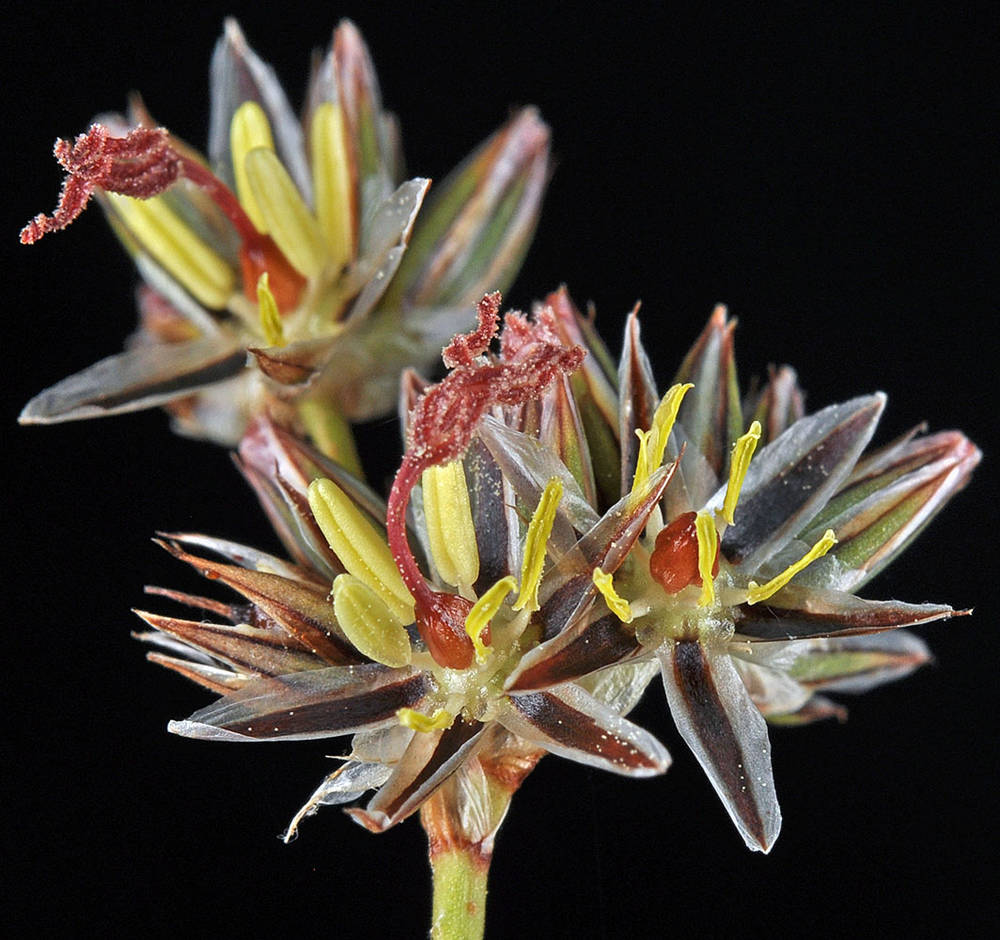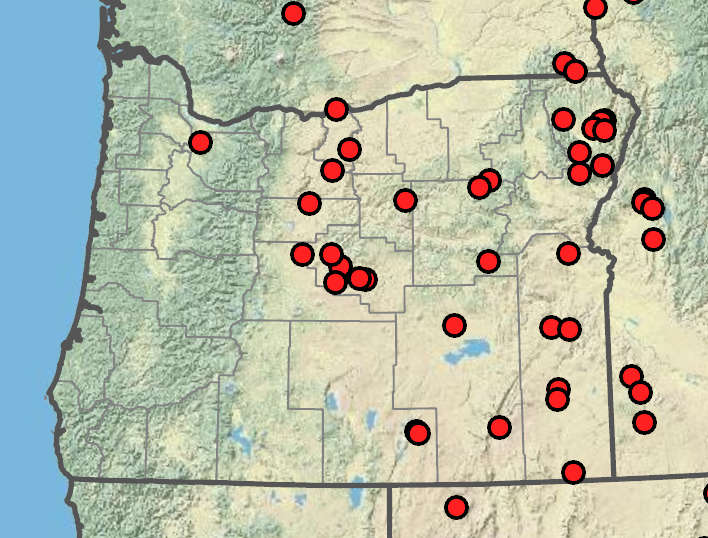Juncus tenuis
Juncus longistylis
path rush, poverty rush, slender rush
long-styled rush
thin and wiry;
blade flat and slightly inrolled, usually 1–8 mm on early season shoots; dirty white or translucent, scarious; acute or acuminate;
auricles soft and thin.
flat; grass-like, blue-green;
auricles prominent, usually rounded; (0.7)1– 1.8(2.5)mm.
cymes, usually small, 1–6 cm; individual flowers often longer than internodes;
bractlets subtending flowers usually acute (blunt).
1–4(5) clusters; clusters 3–8(12)-flowered.
tepals 6, 3–4.1 mm, green to reddish;
tips acuminate;
stamens 6;
filaments 0.6–1.2 mm;
anthers usually 0.4–0.6(0.8)mm;
styles 0.1–0.3(0.5)mm.
tepals 6, usually 4–6 mm, dark brown, sometimes papillose;
stamens 6;
filaments (0.5)0.7–1 mm;
anthers (1.2)1.5–1.7(2) mm;
styles 0.6–1.3 mm.
usually 2.5–3 mm; more than 75% the length of; and shorter than the tepals, pale brown;
apex usually blunt (acute), not crested, 1-chambered.
ovoid, obtuse or truncate; shorter than the tepals, dark brown, 3-chambered.
0.4–0.5 × 0.2–0.25 mm, apiculate.
0.4–0.6 × 0.2– 0.25 mm, faintly reticulate, apiculate.
=40, 80.
=40.
Juncus tenuis
Juncus longistylis
Shores, swales, springs, dune hollows, wet woods, marshes, damp paths, ditches, cranberry farms, moist disturbed sites. 0–1800m. BW, Casc, CR, Est, Lava, Sisk, WV. CA, NV, ID, WA; throughout most of North America. Native.
Juncus tenuis is usually much smaller than Juncus anthelatus. The blunt unridged capsules separate J. tenuis from J. confusus, J. occidentalis, and J. trilocularis.
Wet meadows, springs, floodplains, ditches. 500–2000 m. BR, BW, Lava, Owy. CA, NV, ID, WA; north to British Columbia, east to Newfoundland and MI, southeast to CO and NM. Native.
This species is similar to J. regelii but with apiculate seeds. The well-developed auricles help separate it from J. orthophyllus.
Peter Zika
Peter Zika
- Local floras:
BC,
CA,
OR,
WA
- Local Web sites:
CalFlora,
CalPhotos,
Flora NW,
PNW Herbaria
WildflowerSearch
iNaturalist (observations)
USDA Plants Database
- LBJ Wildflower Center
- SEINet
- Plants of the World Online
- Encyclopedia of Life
- Wikipedia
- Google Image Search
- Local floras:
BC,
CA,
OR,
WA
- Local Web sites:
CalFlora,
CalPhotos,
Flora NW,
PNW Herbaria
WildflowerSearch
iNaturalist (observations)
USDA Plants Database
- LBJ Wildflower Center
- SEINet
- Plants of the World Online
- Encyclopedia of Life
- Wikipedia
- Google Image Search



